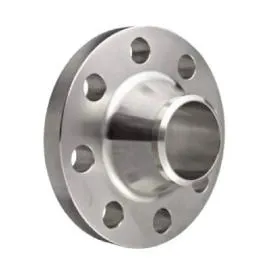-
Cangzhou Yulong Steel Co., Ltd.
-
Phone:
+86 13303177267 -
Email:
admin@ylsteelfittings.com
- English
- Arabic
- Italian
- Spanish
- Portuguese
- German
- kazakh
- Persian
- Greek
- French
- Russian
- Polish
- Thai
- Indonesian
- Vietnamese
- Zulu
- Korean
- Uzbek
- Hindi
- Serbian
- Malay
- Ukrainian
- Gujarati
- Haitian Creole
- hausa
- hawaiian
- Hebrew
- Miao
- Hungarian
- Icelandic
- igbo
- irish
- Japanese
- Javanese
- Kannada
- Khmer
- Rwandese
- Afrikaans
- Albanian
- Amharic
- Armenian
- Azerbaijani
- Basque
- Belarusian
- Bengali
- Bosnian
- Bulgarian
- Catalan
- Cebuano
- China
- China (Taiwan)
- Corsican
- Croatian
- Czech
- Danish
- Esperanto
- Estonian
- Finnish
- Frisian
- Galician
- Georgian
- Kurdish
- Kyrgyz
- Lao
- Latin
- Latvian
- Lithuanian
- Luxembourgish
- Macedonian
- Malgashi
- Malayalam
- Maltese
- Maori
- Marathi
- Mongolian
- Myanmar
- Nepali
- Norwegian
- Norwegian
- Occitan
- Pashto
- Dutch
- Punjabi
- Romanian
- Samoan
- Scottish Gaelic
- Sesotho
- Shona
- Sindhi
- Sinhala
- Slovak
- Slovenian
- Somali
- Sundanese
- Swahili
- Swedish
- Tagalog
- Tajik
- Tamil
- Tatar
- Telugu
- Turkish
- Turkmen
- Urdu
- Uighur
- Welsh
- Bantu
- Yiddish
- Yoruba

Oct . 05, 2024 18:14 Back to list
Understanding the Principles and Applications of BS EN 10216 Standard for Steel Tubes
Understanding BS EN 10216 An Overview of Steel Tubes for Pressure Purposes
BS EN 10216 is a critical standard in the field of materials engineering, particularly concerning the manufacturing and quality control of steel tubes used for pressure purposes. This standard is essential for industries that rely on high-strength steel tubes, such as oil and gas, power generation, and chemical engineering. Understanding BS EN 10216 is crucial for ensuring safety, reliability, and compliance in these demanding applications.
What is BS EN 10216?
BS EN 10216 is a European standard that specifies the technical delivery conditions for seamless and welded steel tubes intended for use in high-pressure applications. It includes requirements for the chemical composition, mechanical properties, and manufacturing processes of the tubes. This standard ensures that the materials can withstand the operational pressures they will encounter in service, thereby minimizing the risk of failure.
Scope and Applications
The standard applies to various types of steel tubes used in pressure applications, covering both carbon and alloy steels. The tubes can be used in a variety of sectors, including
1. Oil and Gas Industry High-pressure pipelines and equipment must be constructed from materials that can endure extreme conditions. 2. Power Generation Steel tubes are used in boiler systems, heat exchangers, and nuclear reactors, where safety and reliability are paramount. 3. Chemical Processing Tubes that transport aggressive chemicals must meet stringent specifications to prevent leaks and failures.
Key Requirements of the Standard
bs en 10216

BS EN 10216 outlines specific requirements regarding
- Chemical Composition The standard mandates precise limits for various alloying elements to ensure the tubes can achieve required strength and corrosion resistance.
- Mechanical Properties Tensile strength, yield strength, and elongation are critical parameters defined by the standard. These properties ensure that the tubes can perform reliably under high-pressure conditions.
- Manufacturing Processes The standard specifies the processes for producing seamless and welded tubes, including methods for testing and quality checks. This ensures that all products meet the necessary safety and performance criteria.
- Tests and Inspections BS EN 10216 requires various non-destructive testing methods, including ultrasonic testing and radiographic inspection, to identify potential flaws in the tubes before they are put into service.
Importance of Compliance
Adhering to BS EN 10216 is vital for manufacturers and end-users alike. For manufacturers, compliance ensures that their products are safe and reliable. For end-users, it provides a level of assurance that the materials used in their operations are of high quality and can perform as expected under pressure. This is particularly crucial in industries where failure could lead to catastrophic consequences.
In conclusion, BS EN 10216 serves as an important benchmark for the production and use of steel tubes in high-pressure applications. Its comprehensive guidelines help ensure safety, reliability, and efficacy in sectors that demand the utmost in material performance. Understanding and implementing this standard is essential for anyone involved in the design, manufacture, and use of high-pressure piping systems. Through adherence to BS EN 10216, industries can reduce risks and enhance operational efficiencies, ultimately contributing to safer and more effective engineering practices.
Latest news
-
ANSI 150P SS304 SO FLANGE
NewsFeb.14,2025
-
ASTM A333GR6 STEEL PIPE
NewsJan.20,2025
-
ANSI B16.5 WELDING NECK FLANGE
NewsJan.15,2026
-
ANSI B16.5 SLIP-ON FLANGE
NewsApr.19,2024
-
SABS 1123 FLANGE
NewsJan.15,2025
-
DIN86044 PLATE FLANGE
NewsApr.19,2024
-
DIN2527 BLIND FLANGE
NewsApr.12,2024
-
JIS B2311 Butt-Welding Fittings LR/SR 45°/90° /180°Seamless/Weld
NewsApr.23,2024











